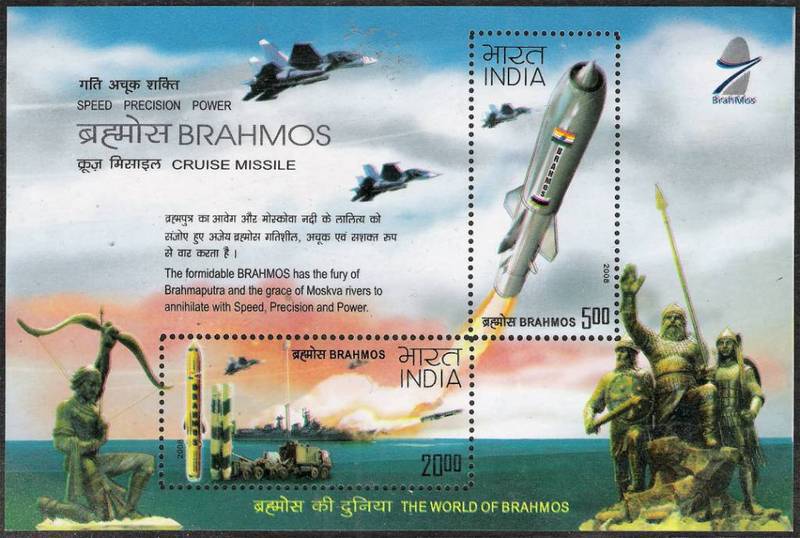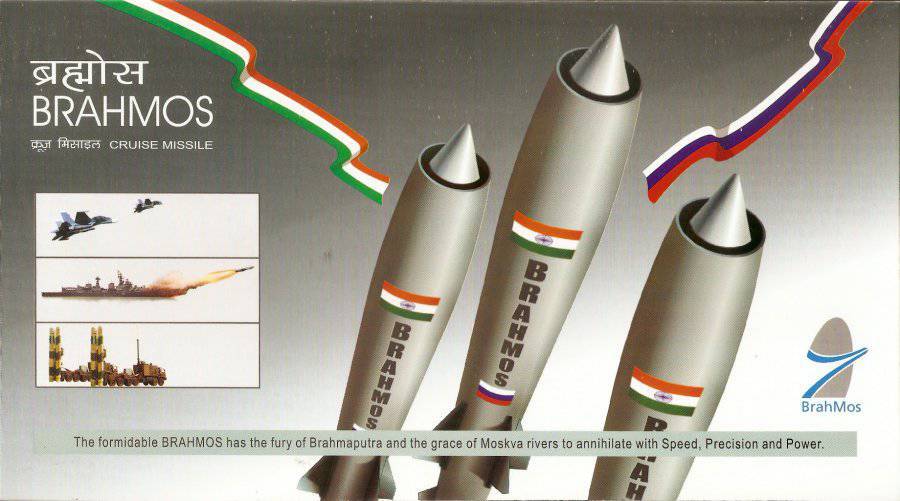Supersonic "BrahMos" joint brainchild of Russia and India
One of the most famous and most significant projects in the field of military-technical cooperation between Russia and India is the creation of a joint missile complex armed with a supersonic cruise missile by a joint interstate enterprise BrahMos Aerospace. The very name “BrahMos” personifies the confluence of two rivers - the calm and graceful Moskva River and the frantic, indomitable Brahmaputra. The authorized capital of a company established over 10 years ago is $ 250 million, of which Russia owns 49,5% and India owns 50,5%.
On the first day of the MAKS-2011 Aviation and Space Salon, the BrahMos Aerospace Company, MAI and MIC OJSC Mashinostroenie, signed a memorandum of understanding. Signatures under an official document in the presence of Andrei Fursenko, Minister of Education and Science, were put to Sivathana Pillay, General Director of Bramos Aerospace, Alexander Leonov, General Director of the MIC Mashinostroenie and Anatoly Gerashchenko, Rector of the Moscow Institute.
Responding to a question from journalists about the meaning and purpose of the signed agreement, Sivathanu Pillay recalled that India and Russia, within the framework of the first BrahMos project, proved the effectiveness of their cooperation by creating a supersonic cruise missile. But now, BrahMos Aerospace has identified a more ambitious task for implementation - to build a hypersonic rocket that will be able to reach speeds corresponding to the number M = 7. Within the framework of this project, the BrahMos Aerospace company needs fruitful cooperation with the MAI. The amount of initial investment in the school will be approximately $ 1 million. “The product that we create with the help of this leading institution should be the most progressive in the world. Today, we don’t want to be in second place to anyone, ”Pillay concluded.

The missile in question, "BrahMos", is not only a supersonic cruise missile, but which is quite possible to use in the highlands. This was reported to Sivathan Pillay during the MAKS-2011 showroom. He said that the new rocket is capable of flying around a high-altitude terrain. “After the flight to the top of the mountain, it enters the peak with supersonic speed,” Pillay said. The representative of the Indian side also said that the draft of the aviation version of the new BrahMos missile has already been practically prepared, and today, work is under way related to the aircraft carrying this missile. The Indian Ministry of Defense provided two Su-30MKI military aircraft for this project. It is assumed that closer to the end of 2012, the first launches will be held.
The rector of the MAI, Anatoly Gerashchenko, in turn, refused to talk about the specific timing of the project's implementation of a unique hypersonic rocket, while noting that "this work is designed for the long term," but agreed with Sivathan Pillay that the first results of the work will be known already over the next five years.
Earlier, test launches of the missiles presented at MAKS-2011 were made in the mountains and in the desert area. During the tests, it was found that the minimum altitude of a supersonic rocket declared by the designers is at a level of ten meters, which makes it extremely difficult to destroy it. The BrahMos supersonic rocket, based on the Russian Yakhont rocket, can reach a tremendous speed exceeding 2,5-2,8 times the speed of sound. The BrahMos missile can be launched from onshore installations, submarines, ships, and also as indicated above from Su-30MKI aircraft. In serial production, two versions of weapons: an option for the ground forces and sea-based.
Also ready for production and transfer to service version of the BrahMos missile, which is designed for launches from a submarine. "Our plans for the current year provide for the launch of this rocket from a submarine already this year," said Sivathana Pillay.
The supersonic rocket is assembled by the BrahMos Aerospace in Indian Hyderabad and the Russian FSUE PO Strela in the city of Orenburg. Before 2016, it is planned to manufacture 1000 missiles, of which almost half are intended for export to third countries.
Having presented joint armament at the MAKS-2011 international salon, Russia and India once again confirmed their close cooperation in the market for the production of military equipment and armaments, which was in jeopardy after a scandal involving the refusal of Russia to take part in land and naval exercises together with armed by the forces of India.

Information